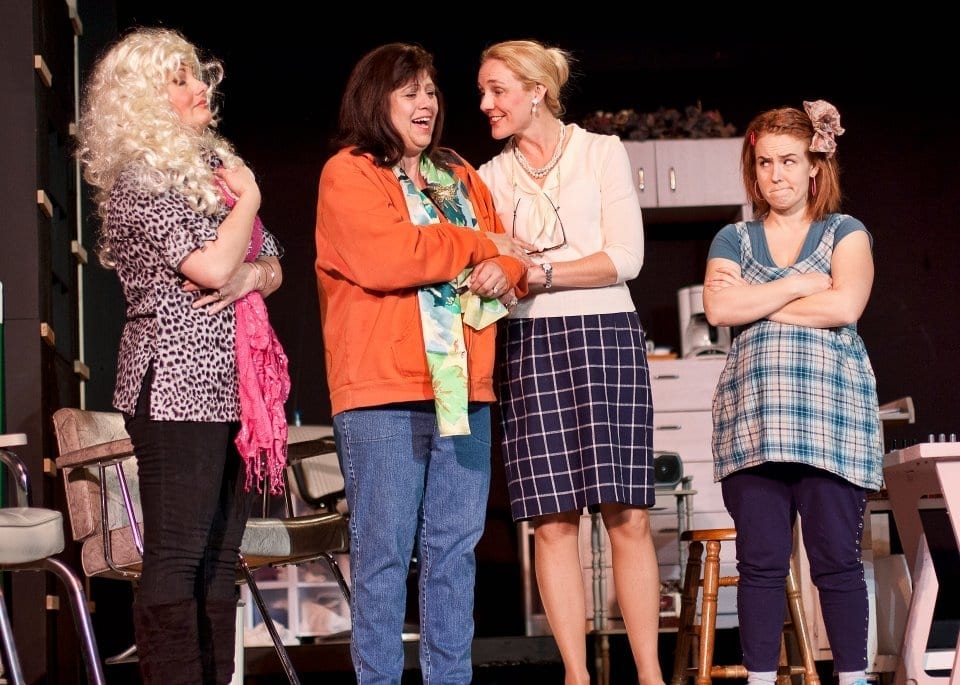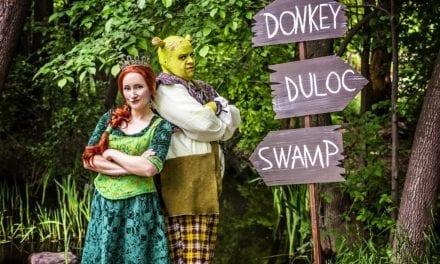OREM — A Christmas Story: The Musical is part of a trend on Broadway in the past 20 years of turning popular movies into musicals. Given the financial risks of mounting a show on Broadway, it makes sense; a well-known title has a built-in following, and it is unnecessary to explain the show in order to market it.

Show closes December 19, 2020.
The problem with most of these shows—including A Christmas Story—is that it is hard to improve on a masterpiece. The best musical adaptations are usually based on flawed films (like Little Shop of Horrors, Newsies or Hairspray) because they give the musical’s creators the chance to fix problems in the story. But when there are no problems, the changes are often unnecessary and can even diminish the work. For every Beauty and the Beast and The Producers, there are several mediocrities like The Little Mermaid, 9 to 5, Young Frankenstein, and the recent short-lived Broadway flops Tootsie and Groundhog Day.
I dwell on this point so much at the onset of the review because it is important to understand the fundamental problem with A Christmas Story: The Musical and why I left the theatre both dazzled and unmoved: dazzled because the cast and creative staff brought their A-game to this production, but unmoved because the show has little reason to exist.

Left to right: Nolan Reinbold as Ralphie, Scott Hendrickson as The Old Man, Tara Kearl as Mother, and Andrew Laudie as Randy. Photo by Rachael Gibson.
One unexpected feature of the pandemic-era plays in Utah is that the casting pool is not as depleted as it is during typical times. Once again, I am pleased to see a cast that is deeply talented, from the lead actors to the youngest ensemble member. As Ralphie, Nolan Reinbold has the confidence and vocal strength to carry the show on his shoulders. His excitement for Christmas and burning desire to receive a Red Ryder BB gun never diminishes, which serves as a strong drive propelling the story. Reinbold has a surprisingly strong voice for an actor his age, and he handles the score (by Benj Pasek and Justin Paul) without a single sour note. His relationship with his on-stage mother (played by Tara Kearl) is particularly believable, especially as he cuddles into Kearl’s lap after the fight with the bully. Kearl, for her part, gives the most human performance in the play, as her character serves as the force of stability in the family. Kearl is tender as she sings the ode to homemaking “What a Mother Does,” and her horror at seeing the leg lamp is one of the best character moments of the show.
Scott Hendrickson is the lead actor who does the most to distance his performance from the film version. As “The Old Man” (Ralphie’s father), Hendrickson gives a touch of wackiness to the role, which serves the show well when he is the centerpiece of “A Major Award” as he celebrates his new leg lamp. In the role of Ralphie’s teacher (Miss Shields), Allison Books steals the show in “You’ll Shoot Your Eye Out,” as she belts out the song while backed up by a troupe of child tap dancers. Books also has one of the funniest understated moments as she lays the guilt on thick when trying to get one of the students to admit that they dared Flick to touch his tongue to the pole.

Scott Hendrickson as The Old Man. Photo by Rachael Gibson.
Another one of the stars of the show is Lindsay Folkman‘s appealing choreography. The cast is adept at executing the traditional musical theatre steps in “When You’re a Wimp” and “Up on Santa’s Lap,” and the fantasy tap number “You’ll Shoot Your Eye Out” is endlessly cute as the children do their best 1930s gangster impressions. Folkman also creates a delightfully absurd pas de deux for Hendrickson and the infamous leg lamp. DeLayne Bluth Dayton‘s direction is adept at distinguishing the fantasy sequences from the realistic scenes in Joseph Robinette‘s script, and her music direction made the ensemble numbers “Ralphie to the Rescue,” “It All Comes Down to Christmas (Part 2)” and “A Christmas Story” soar with well executed harmonies and key changes.
From a technical standpoint, A Christmas Story: The Musical is a laudable accomplishment. Set designer Shawn M. Herrera built a towering two-story set for the family home and decorated it with authentic midcentury appliances and period wallpaper. Costume designers Deborah Bowman and Kelsey Seaver continue their strong track record; they dressed the ensemble and lead characters is a way that made them feel like real people who all inhabit the same town and time period. Bowman and Seaver also contributed to the kitsch of “A Major Award” and “You’ll Shoot Your Eye Out” with spangled matching costumes for the ensemble.
Like many musical adaptations of hit films, A Christmas Story: The Musical cannot escape the shadow of its source material. But the SCERA cast and crew do their best with show, and the play serves as a good vehicle for Reinbold and the rest of the cast. Its best moments are the ones that are furthest from the movie, but these are too few to make the show worth producing. Most scenes play parallel to the audience’s memories of the movie, and the comparison is inevitable. SCERA’s production is excellent in showing off the depth of creative talent in Utah County, but many audience members will prefer to stay at home and watch the film.

This review was supported by a generous grant from the Orem CARE program.





